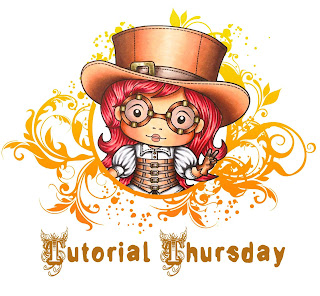Let's Color Up Frenchie!
Hi everyone! It's Meg here today with you. I get asked a lot about coloring, so I thought I'd do something different for this Tutorial Thursday and take you through the process of coloring up a La-La Land Crafts image!
For this tutorial, I've used Dandy Frenchie, and my goal is to give you some tips on how to make your Frenchie look like a real dog! I've used Copic markers to color my pup up, but this technique works for any medium.
First, you need to identify areas of highlight and areas of shadow in your image. (I'm assuming a not-strong light source that doesn't cast a big shadow on any one part of my dog).
Second, identify the areas of shadow and mark them in. You will have a shadow whenever one part of the doggie body is behind another part, or whenever clothing meets the body.
Third - this is the most important step for me - mark "texture", or added areas of shadow. These areas of shadow aren't defined by the stamp, usually. Remember that doggies have plump bodies. This means that you need shadow on both sides of bodies, legs, heads, etc. If you don't have this shadow, the animal will look 2-dimensional and not real.
Now, you're ready to start coloring in. Some things I remember when I color in are: shade liberally from cast shadows to highlight. And also, shade lightly from the "texture areas" to highlight - you don't want to add a lot of darkness to those areas, just enough to give interest to Frenchie.
So, fourth, using your second-darkest color, color over your shadows and extend the color into the white areas of the image. Notice how I added a bit of extra texture to the leftmost leg with this color. You can feel free to continue adding texture as you get lighter - those gradations in shades really help the image look real-life!
Fifth - using your middle color (I am assuming 5 colors for Frenchie), continue this pattern. Notice how I added texture to his chin and forehead with this color.
Sixth - this step is important for closing up the edges of Frenchie's legs and cheeks. I use the 2nd lightest color to go around the edges of the texture I created. I don't use the lightest color for this part because I want the highlight areas to really "pop". Adding in too much light too soon can just cause the image to look washed out.
Seventh - now all that's left is to add those highlights with your lightest marker!
Now, I just couldn't leave Frenchie without his clothing colored, so decided to give him a nice Autumn flair. I follow the same technique in doing his clothing.
First, I identify the highlight areas and shadows in the jacket and hat band (orange - I've used 3 colors).
Second, I use my second-darkest color to extend the shadows into the white space, working towards the highlights.
Finally, add in the lightest color for your highlight areas. In the following picture, I've moved on to show you the first steps of adding the green for Frenchie's hat and bowtie.
Following the procedure in this tutorial, finish filling in the greens (3 colors). Your finished Dandy Frenchie will look like this:
I always do one extra step and that is to add highlight with a white gel pen - I always add this extra "punch" to the darkest parts of the image to give contrast. And remember - if you're adding stripes - straight lines on a rounded object aren't straight. Your lines need to curve with Frenchie's tummy to keep it looking real.
Thanks for stopping by to visit us today!
Hugs, Meg





















Comments
Post a Comment